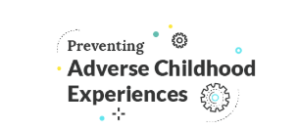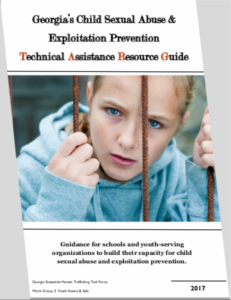Preventing ACEs and Sexual Violence at Every Age
Primary prevention of sexual and domestic violence occurs at any age, and often our efforts are most impactful when prevention begins early in a person’s life. Preventing sexual and intimate partner violence from a young age can have significant impacts on preventing adverse childhood experiences (ACEs), too. So how do we prevent ACEs, especially child sexual abuse and exploitation, before they occur and provide safe networks for healing? Two resources, one from the Centers for Disease Control and Prevention’s (CDC) VetoViolence and one from the Georgia Statewide Human Trafficking Task Force, aim to answer that question.
VetoViolence recently released a new online training, “Preventing Adverse Childhood Experiences.” The introductory modules are available now, and modules specific to how professionals across sectors can engage in preventing ACEs will be available soon.
 The training module is intentional in pointing out that ACEs affect everyone differently, and much of that is due to discrimination. ACEs often stem from the conditions in which families operate, and these conditions are stressed by discrimination, community violence, and poverty. Focusing on community-level prevention efforts that address root causes of violence and oppression have the greatest impact on preventing ACEs and sexual and intimate partner violence, as well as fostering resiliency among survivors. Many of the prevention strategies for ACEs highlighted in this training overlap with strategies to prevent sexual violence and domestic and intimate partner violence, such as promoting positive social norms and strengthening economic supports for families.
The training module is intentional in pointing out that ACEs affect everyone differently, and much of that is due to discrimination. ACEs often stem from the conditions in which families operate, and these conditions are stressed by discrimination, community violence, and poverty. Focusing on community-level prevention efforts that address root causes of violence and oppression have the greatest impact on preventing ACEs and sexual and intimate partner violence, as well as fostering resiliency among survivors. Many of the prevention strategies for ACEs highlighted in this training overlap with strategies to prevent sexual violence and domestic and intimate partner violence, such as promoting positive social norms and strengthening economic supports for families.
The training module also holds a resource center, where users can access the materials mentioned in the training, like the Essentials for Childhood Framework to prevent ACEs and Preventing Child Abuse and Neglect: A Technical Package for Policy, Norm, and Programmatic Activities.
Whether prevention work primarily focuses on ACEs, sexual violence, or domestic violence, the goal of creating safe, stable, nurturing relationships and environments is at the core of all this work, and making those connections helps to prevent multiple forms of violence in communities. Georgia’s Child Sexual Abuse & Exploitation Prevention Technical Assistance Resource Guide?outlines the connections between sexual violence prevention and child sexual abuse and exploitation prevention, and guides schools and youth-serving organizations in their capacity for and knowledge of child sexual abuse and exploitation prevention.
 This guide, which is an adaptation of the 2014 Vermont Sexual Violence Prevention Technical Assistance Resource Guide, is one of the first of its kind to acknowledge the importance and prevention of ACEs in sexual violence prevention efforts.?Prevention practitioners, educators, and community members will find valuable resources for connecting the dots between adverse childhood experiences and sexual violence, planning and evaluating effective prevention programs, selecting recommended programs that best fit their communities’ needs, and making a plan to bring prevention beyond schools and into the broader community.
This guide, which is an adaptation of the 2014 Vermont Sexual Violence Prevention Technical Assistance Resource Guide, is one of the first of its kind to acknowledge the importance and prevention of ACEs in sexual violence prevention efforts.?Prevention practitioners, educators, and community members will find valuable resources for connecting the dots between adverse childhood experiences and sexual violence, planning and evaluating effective prevention programs, selecting recommended programs that best fit their communities’ needs, and making a plan to bring prevention beyond schools and into the broader community.
The guidance is clear that everyone has a role to play in preventing child sexual abuse and exploitation, and prevention doesn’t end when a person turns 18. Many of the prevention programs in this resource guide include material similar to what is often seen in teen dating and sexual violence prevention programs, such as teaching skills to prevent violence like safe and healthy relationship skills, and how to set and respect boundaries and identify signs of abusive behavior. With this guide, prevention practitioners have a wide selection of age-appropriate programs that have the capacity to prevent multiple forms of violence across the lifespan.
Prevention efforts work best when communities are engaged starting from a young age and when efforts are combined across systems, sectors, and types of violence. Having guidance from states and training from the CDC that supports connecting intersecting violence prevention efforts strengthens the work to create safer, healthier communities.
Access the VetoViolence “Preventing Adverse Childhood Experiences” training modules here. View the technical assistance resource guide from the Georgia Statewide Human Trafficking Task Force here.

Leave a Reply